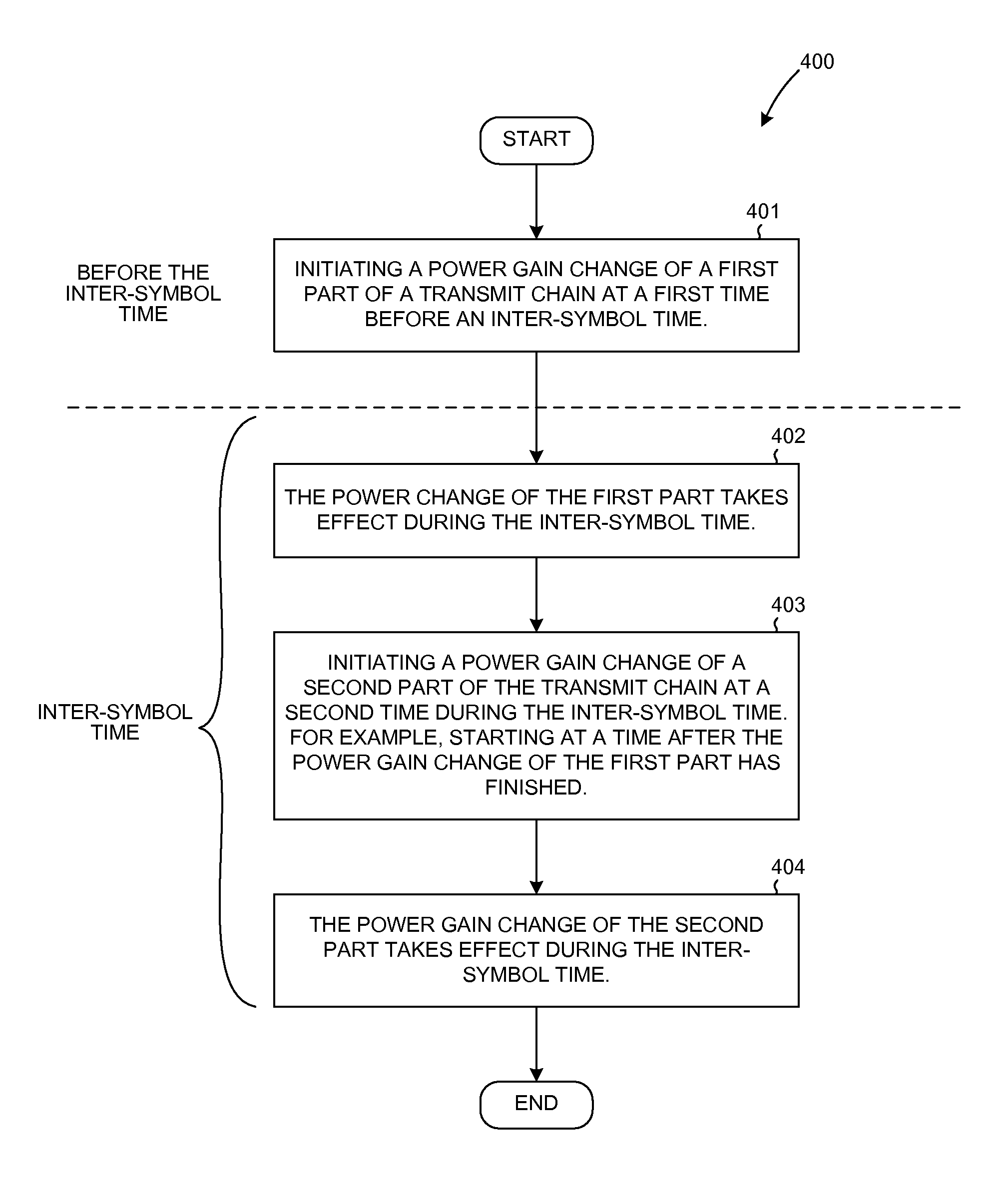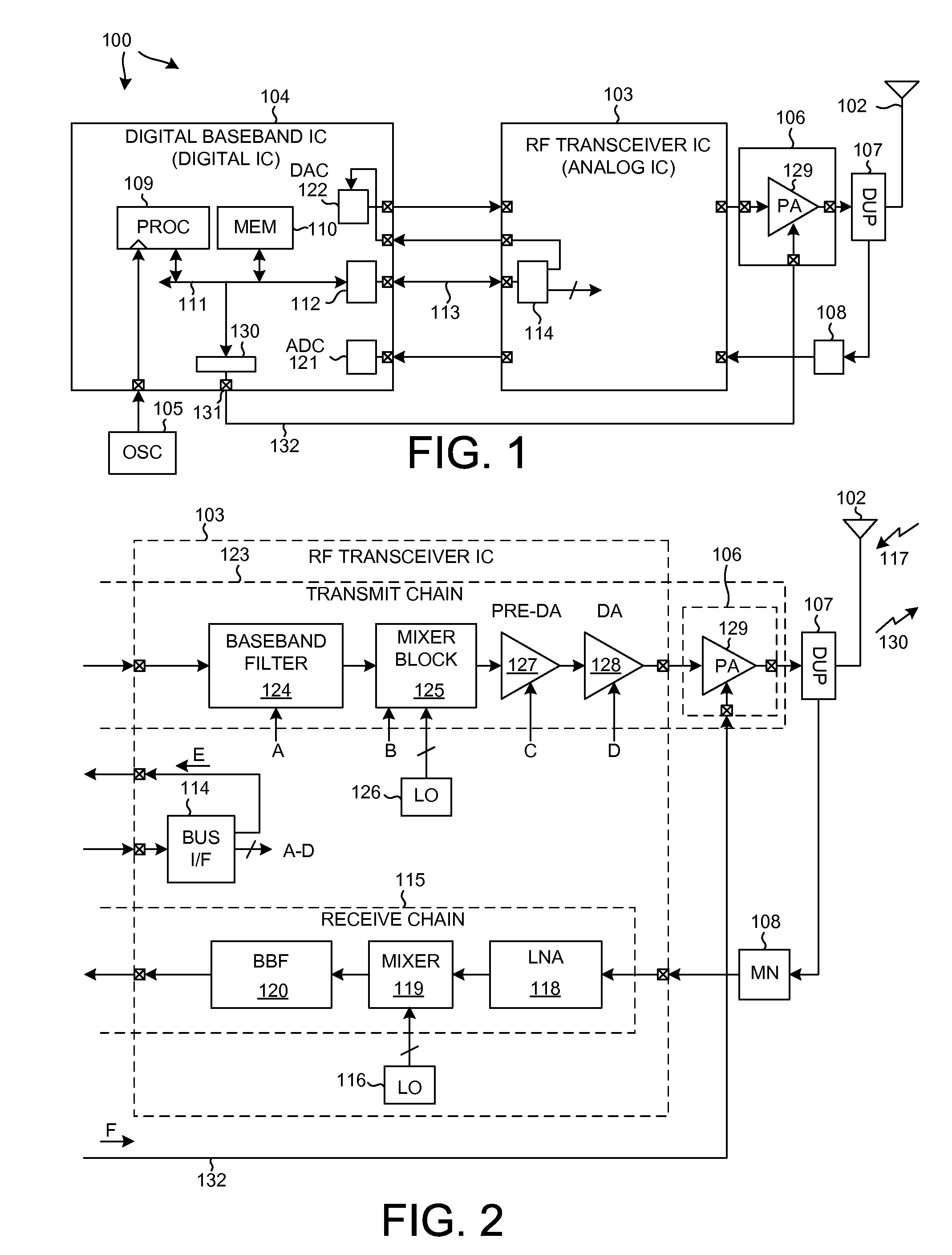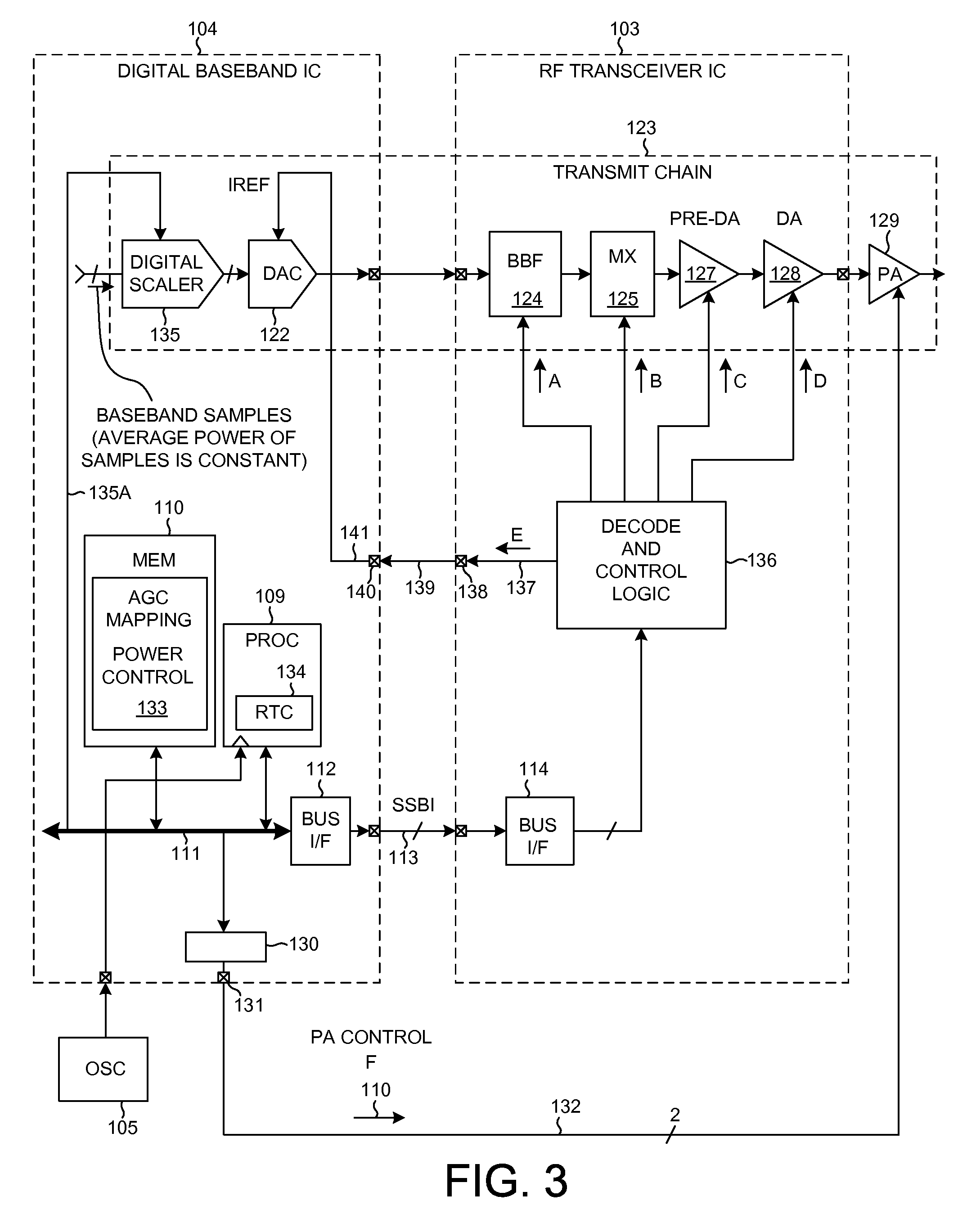Transmitter chain timing and transmit power control
a technology of transmitter chain and transmission antenna, which is applied in the direction of gain control, digital transmission, baseband system details, etc., can solve the problems of transmission power problems and difficulties in controlling the amount of transmit power delivered to a transmit antenna, and achieve the effect of changing the overall power gain of the transmit chain
- Summary
- Abstract
- Description
- Claims
- Application Information
AI Technical Summary
Benefits of technology
Problems solved by technology
Method used
Image
Examples
Embodiment Construction
[0018]FIG. 1 is a very simplified high level block diagram of one particular type of mobile communication device 100 in accordance with one novel aspect. The cellular telephone includes (among several other parts not illustrated) an antenna 102, two integrated circuits 103 and 104, an external oscillator 105, an external power amplifier integrated circuit 106, a duplexer 107 and a matching network 108. Integrated circuit 104 is called a “digital baseband integrated circuit” or a “baseband processor integrated circuit”. Digital baseband integrated circuit 104 includes, among other parts not illustrated, a digital processor 109 that executes instructions stored in a processor-readable medium 110. Processor 109 can cause information to be communicated across parallel local bus 111 and serial bus interface 112 and serial bus conductors 113 to serial bus interface 114 of integrated circuit 103. Processor 109 is clocked by a clock signal received from external oscillator 105. Integrated c...
PUM
 Login to View More
Login to View More Abstract
Description
Claims
Application Information
 Login to View More
Login to View More - R&D
- Intellectual Property
- Life Sciences
- Materials
- Tech Scout
- Unparalleled Data Quality
- Higher Quality Content
- 60% Fewer Hallucinations
Browse by: Latest US Patents, China's latest patents, Technical Efficacy Thesaurus, Application Domain, Technology Topic, Popular Technical Reports.
© 2025 PatSnap. All rights reserved.Legal|Privacy policy|Modern Slavery Act Transparency Statement|Sitemap|About US| Contact US: help@patsnap.com



